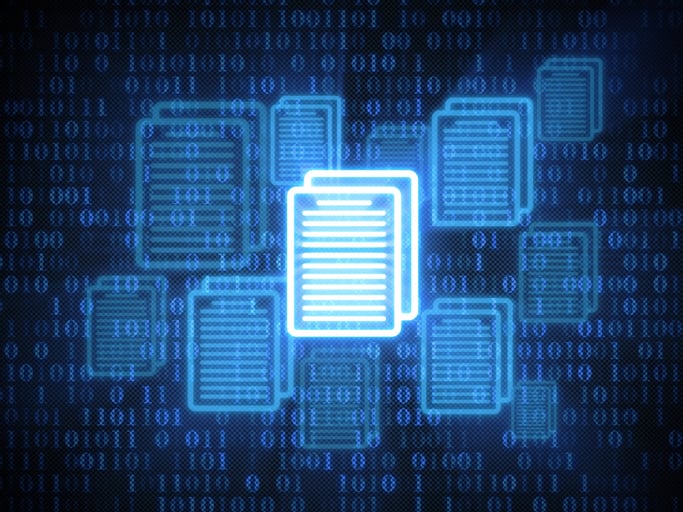5 min read
Deleting Files in Python: Step-by-Step Instructions and Best Practices
Deleting Files With Python There’s something profoundly refreshing about clearing out the old to make way for the new, whether it’s spring cleaning...
3 min read
![]() The Amazing Team at Skills Data Analytics
:
Apr 30, 2024 9:33:37 AM
The Amazing Team at Skills Data Analytics
:
Apr 30, 2024 9:33:37 AM
Unlock the power of data cleansing with this comprehensive guide that takes you through the step-by-step process and best practices to optimize your data analytics.
Data cleansing plays a crucial role in maximizing the value of clean data through quality assurance. By ensuring that your data is accurate, complete, consistent, and reliable, you can make better-informed decisions and achieve more accurate results in your data analytics.
Quality assurance techniques are essential in data cleansing to identify and correct any errors, inconsistencies, or discrepancies in your data. This involves performing thorough checks, validations, and audits to ensure the integrity and quality of your data.
By maximizing the value of clean data through quality assurance, you can trust the insights and outcomes derived from your data analytics, leading to improved business performance and decision-making.
Data cleansing is of utmost importance in any data-driven organization. It involves the process of identifying and correcting or removing errors, inconsistencies, and inaccuracies in your data. Without proper data cleansing, your data analytics efforts may be compromised and lead to incorrect or misleading insights.
By understanding the importance of data cleansing, you can ensure that your data is reliable, accurate, and consistent. Clean data is essential for generating meaningful insights, making data-driven decisions, and achieving business objectives.
Data cleansing helps in eliminating duplicate records, standardizing data formats, and resolving missing or incomplete data. It improves data quality, enhances data integrity, and increases the effectiveness of your data analytics initiatives.
Data cleansing is a critical step in optimizing data analytics. It helps in improving the accuracy and reliability of your data, which is essential for generating valuable insights and making informed business decisions.
By cleansing your data, you can eliminate errors, inconsistencies, and redundancies that may affect the quality and reliability of your analytics. This ensures that the results and conclusions drawn from your data analysis are accurate and trustworthy.
Data cleansing also enables you to standardize data formats, resolve missing or incomplete data, and eliminate duplicate records. These optimizations enhance the efficiency and effectiveness of your data analytics, allowing you to extract valuable insights and derive actionable recommendations.
Data quality enhancement is a key objective of data cleansing. By enhancing the quality of your data, you can ensure that your insights and analysis are based on accurate and reliable information.
Data cleansing techniques such as data validation, data standardization, and data enrichment help in improving data quality. These techniques involve identifying and correcting errors, inconsistencies, and inaccuracies in your data, ensuring its completeness, accuracy, consistency, and validity.
Enhancing data quality leads to better insights and analysis, as well as improved decision-making. It enables you to uncover hidden patterns, trends, and correlations in your data, providing valuable insights that can drive business growth and success.
The data cleansing process involves several steps to ensure the accuracy, completeness, consistency, and reliability of your data. Here is a step-by-step guide to mastering the data cleansing process:
1. Identify and define data quality requirements: Determine the quality standards and criteria that your data should meet.
2. Assess data quality: Evaluate the current state of your data and identify any errors, inconsistencies, or inaccuracies.
3. Plan data cleansing activities: Develop a detailed plan outlining the specific cleansing activities required to address the identified issues.
4. Cleanse data: Execute the planned cleansing activities, which may include data validation, data standardization, data deduplication, and data enrichment.
5. Validate and verify data: Perform thorough checks and validations to ensure the accuracy and reliability of the cleansed data.
6. Monitor data quality: Establish ongoing monitoring processes to continuously assess and maintain the quality of your data.
By following these step-by-step data cleansing process, you can ensure that your data is clean, reliable, and ready for analysis.
Quality assurance techniques are essential in data cleansing to ensure the integrity and reliability of your data. Here are some key techniques to consider when implementing quality assurance in your data cleansing process:
1. Data validation: Validate the accuracy, completeness, and consistency of your data by performing checks and audits against predefined rules and criteria.
2. Data standardization: Standardize data formats, values, and structures to ensure consistency and compatibility across different data sources.
3. Data deduplication: Identify and eliminate duplicate records to avoid redundancy and improve data accuracy.
4. Data enrichment: Enhance your data by adding additional information or attributes from external sources, improving its value and usability.
5. Data profiling: Analyze and assess the quality and characteristics of your data to identify anomalies, inconsistencies, or patterns that may require cleansing.
By implementing these quality assurance techniques, you can enhance the accuracy, reliability, and usability of your data, leading to improved data analytics outcomes and insights.
Also Read: Mastering Data Visualization: Techniques for Effective Communication
For further exploration of data analysis and analytics, check out our bootcamp program on Data Analytics.
FAQs:
What is data cleansing?
Data cleansing is the process of identifying and correcting errors, inconsistencies, and inaccuracies in data to ensure it is accurate, complete, and reliable.Why is data cleansing important for data analytics?
Data cleansing is crucial because it ensures the reliability and accuracy of data analytics, which leads to better-informed decisions and more accurate insights.What are some common data cleansing techniques?
Common techniques include data validation, data standardization, data deduplication, data enrichment, and data profiling.How does data cleansing improve business performance?
By ensuring data quality, data cleansing leads to clearer insights, better decision-making, and ultimately improved business performance.What is the first step in the data cleansing process?
The first step is to identify and define the data quality requirements that your data needs to meet.
5 min read
Deleting Files With Python There’s something profoundly refreshing about clearing out the old to make way for the new, whether it’s spring cleaning...

6 min read
The Importance of Certifications in the Data Analytics Field Certifications play a crucial role in the data analytics field as they provide...

3 min read
Introduction